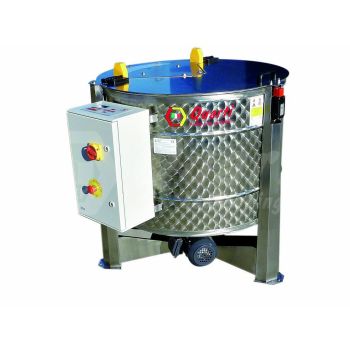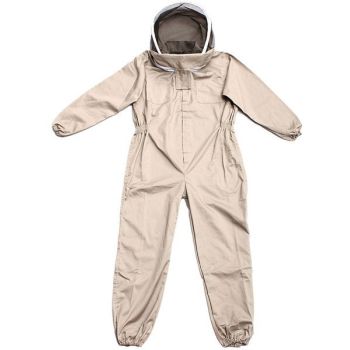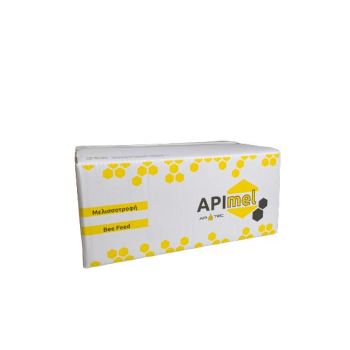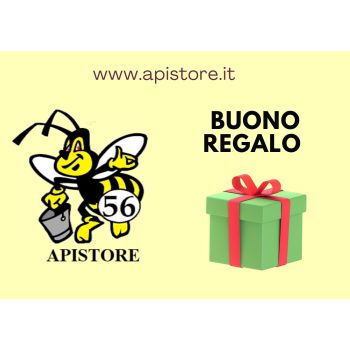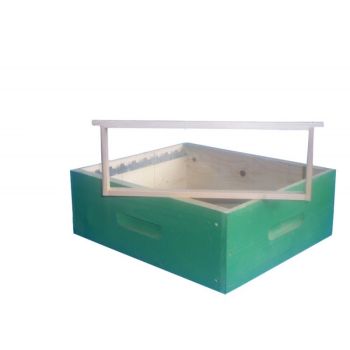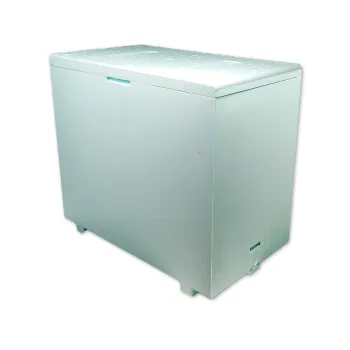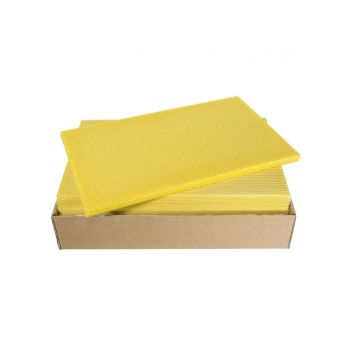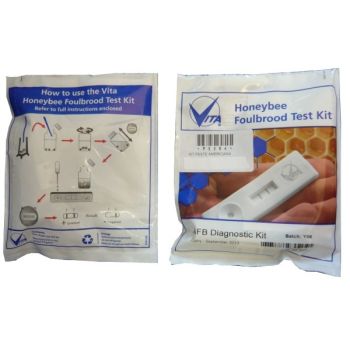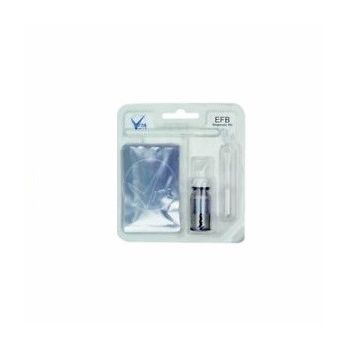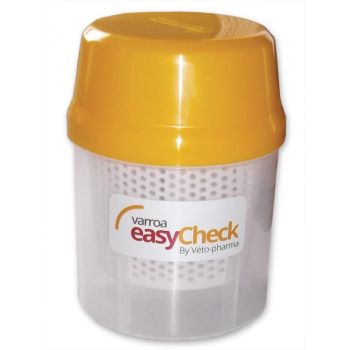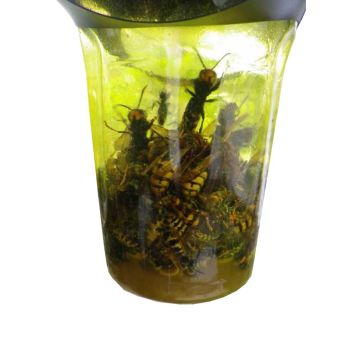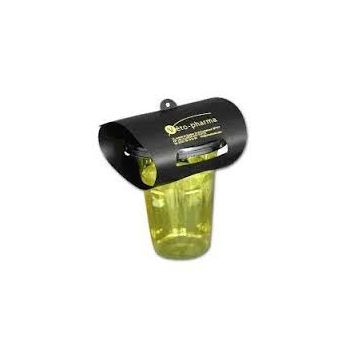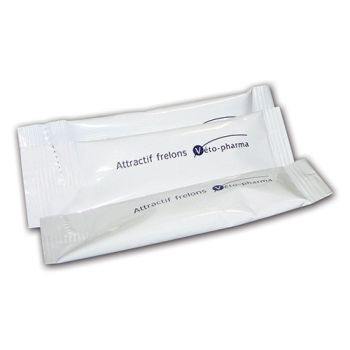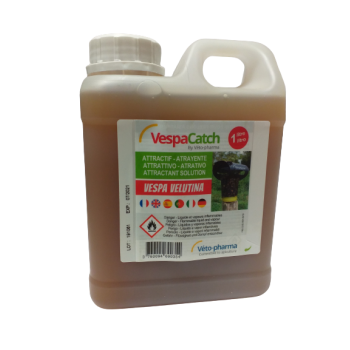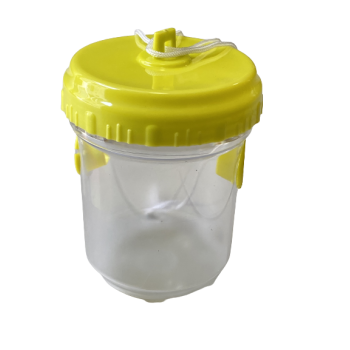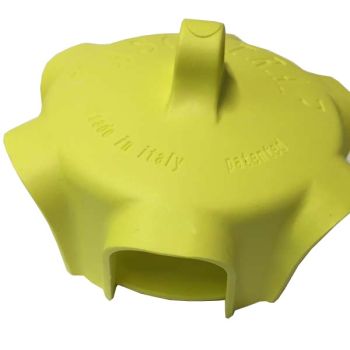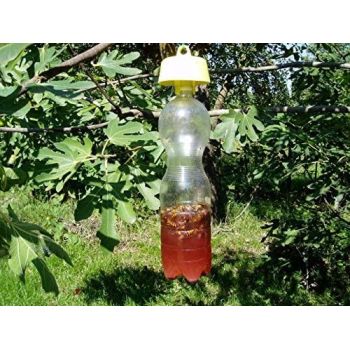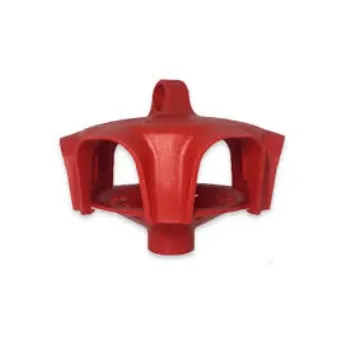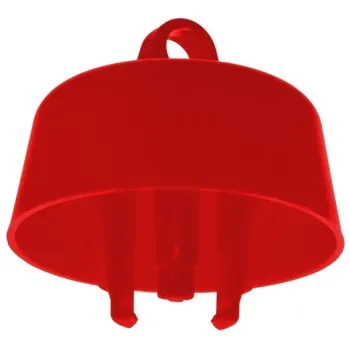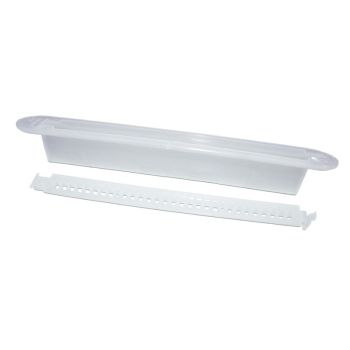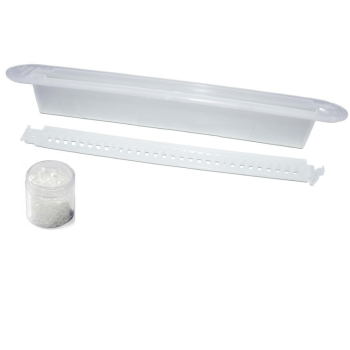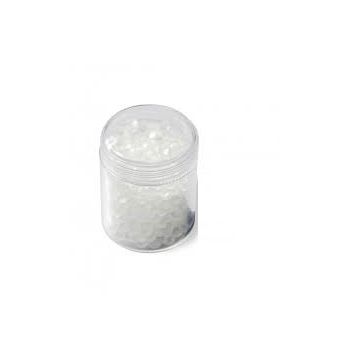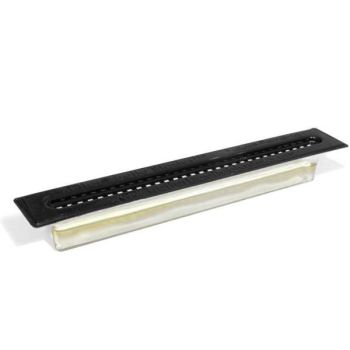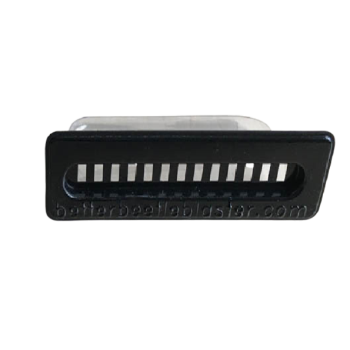Instructions for use Performing the test: Step-by-step illustrations Interpretation of resultsAfter 3 minutes, the control line should be clearly visible in the display window of the device. A positive result (indicated by the appearance of both the test line and the control line-see below) indicates that the pathogen sought is present in the sample, and that the larva taken was infected with American foulbrood. Note that even a faint T-line indicates a positive result.A negative result (only appearance of the control line, test line absent) indicates that the sample does not have American foulbrood pathogens. A negative test result does not guarantee the absence of AFB infection in some other part of the colony than the sample tested. Choose the sample with the utmost care.
Instructions for use Performing the test: Step-by-step illustrations Interpretation of resultsAfter 3 minutes, the control line should be clearly visible in the display window of the device. A positive result (indicated by the appearance of both the test line and the control line-see below) indicates that the pathogen sought is present in the sample, and that the larva taken was infected with American foulbrood. Note that even a faint T-line indicates a positive result.A negative result (only appearance of the control line, test line absent) indicates that the sample does not have American foulbrood pathogens. A negative test result does not guarantee the absence of AFB infection in some other part of the colony than the sample tested. Choose the sample with the utmost care.
The VITA® kit for diagnosis of American foulbrood was developed on behalf of Vita (Europe) Limited by the Pocket Diagnostics section of the Central Science Laboratory in York, UK. It is designed to provide rapid on-site diagnosis of possible infection of bee larvae by American foulbrood. AUTHORIZED PRODUCT for VETERINARY USE.
The VITA® kit for diagnosis of American foulbrood was developed on behalf of Vita (Europe) Limited by the Pocket Diagnostics section of the Central Science Laboratory in York, UK. It is designed to provide rapid on-site diagnosis of possible infection of bee larvae by American foulbrood. AUTHORIZED PRODUCT for VETERINARY USE.
The VITA® kit for diagnosis of American foulbrood was developed on behalf of Vita (Europe) Limited by the Pocket Diagnostics section of the Central Science Laboratory in York, UK. It is designed to provide rapid on-site diagnosis of possible infection of bee larvae by American foulbrood. AUTHORIZED PRODUCT for VETERINARY USE.
Instructions for use Extraction: Use the supplied spatula to extract three whole larvae showing suspicious symptoms. Unscrew the lid of the extraction bottle. Deposit the larvae into the bottle, again using the spatula. Shake vigorously so that the larvae soak into the buffer solution. CAUTION - The bottle contains buffer solution and sodium azide; not to be used for human use. Carefully screw the lid back on and shake vigorously for about 20 seconds so that the larvae mix well with the buffer solution. Performing the test: Remove a test device from the aluminum package. WARNING Do not touch the viewing window. Unscrew the lid of the bottle and with the dropper provided, take a good amount of solute. For best results, draw out the solute immediately after shaking so as to prevent bacteria from settling out of the suspension. Hold the device horizontally and gently drop 2-3 drops into the 'well provided. Hold the device horizontally until the extract is absorbed (about 30 seconds) and blue coloration appears in the display window. Wait until the control line (indicated by the letter C) appears and read the result (about 1-3 minutes). Take care to dispose of the test in an environmentally friendly manner. At low temperatures, the test takes longer; the ideal temperature for the test is 18°C and above. Interpretation of resultsAfter 3 minutes, the control line should be clearly visible in the display window of the device. A positive result (indicated by the appearance of both the test line and the control line-see below) indicates that the pathogen sought is present in the sample, and that the larvae taken has been infected with American foulbrood. Note that even a faint T-line indicates a positive result.A negative result (only appearance of the control line, test line absent) indicates that the sample does not have American foulbrood pathogens. A negative test result does not guarantee the absence of AFB infection in some other part of the colony than the sample tested. Choose the sample with the utmost care.
Instructions for use Extraction: Use the supplied spatula to extract three whole larvae showing suspicious symptoms. Unscrew the lid of the extraction bottle. Deposit the larvae into the bottle, again using the spatula. Shake vigorously so that the larvae soak into the buffer solution. CAUTION - The bottle contains buffer solution and sodium azide; not to be used for human use. Carefully screw the lid back on and shake vigorously for about 20 seconds so that the larvae mix well with the buffer solution. Performing the test: Remove a test device from the aluminum package. WARNING Do not touch the viewing window. Unscrew the lid of the bottle and with the dropper provided, take a good amount of solute. For best results, draw out the solute immediately after shaking so as to prevent bacteria from settling out of the suspension. Hold the device horizontally and gently drop 2-3 drops into the 'well provided. Hold the device horizontally until the extract is absorbed (about 30 seconds) and blue coloration appears in the display window. Wait until the control line (indicated by the letter C) appears and read the result (about 1-3 minutes). Take care to dispose of the test in an environmentally friendly manner. At low temperatures, the test takes longer; the ideal temperature for the test is 18°C and above. Interpretation of resultsAfter 3 minutes, the control line should be clearly visible in the display window of the device. A positive result (indicated by the appearance of both the test line and the control line-see below) indicates that the pathogen sought is present in the sample, and that the larvae taken has been infected with American foulbrood. Note that even a faint T-line indicates a positive result.A negative result (only appearance of the control line, test line absent) indicates that the sample does not have American foulbrood pathogens. A negative test result does not guarantee the absence of AFB infection in some other part of the colony than the sample tested. Choose the sample with the utmost care.
The VITA® kit for the diagnosis of European foulbrood was developed on behalf of Vita (Europe) Limited by the Pocket Diagnostics section of the Central Science Laboratory in York, UK. It is designed to provide rapid on-site diagnosis of possible infection of bee larvae by European foulbrood
The VITA® kit for the diagnosis of European foulbrood was developed on behalf of Vita (Europe) Limited by the Pocket Diagnostics section of the Central Science Laboratory in York, UK. It is designed to provide rapid on-site diagnosis of possible infection of bee larvae by European foulbrood
The VITA® kit for the diagnosis of European foulbrood was developed on behalf of Vita (Europe) Limited by the Pocket Diagnostics section of the Central Science Laboratory in York, UK. It is designed to provide rapid on-site diagnosis of possible infection of bee larvae by European foulbrood
Add alcohol diluted in water in a ratio of 1:4 to the container . Take 200-300 bees directly using the transparent container and place them in the inner basket. Close the container with the lid and dip the bees into the liquid, then add liquid up to the marked mark. Seal the lid and shake the jar for 1 minute to separate the bees from the mites. Remove the basket with the bees and count through the transparent container the number of mites. HOW TO CALCULATE THE PERCENTAGE OF VARROA: If 300 bees are used, divide the number of mites by 3. If 200 bees are used, divide the number of mites by 2. Suggested periods for monitoring: LATE WINTER/Spring to assess possible spring treatment - DURING HARVEST to assess the need for any treatment between harvests - AFTER HARVEST to determine which treatment strategy to use in the fall/winter.
Add alcohol diluted in water in a ratio of 1:4 to the container . Take 200-300 bees directly using the transparent container and place them in the inner basket. Close the container with the lid and dip the bees into the liquid, then add liquid up to the marked mark. Seal the lid and shake the jar for 1 minute to separate the bees from the mites. Remove the basket with the bees and count through the transparent container the number of mites. HOW TO CALCULATE THE PERCENTAGE OF VARROA: If 300 bees are used, divide the number of mites by 3. If 200 bees are used, divide the number of mites by 2. Suggested periods for monitoring: LATE WINTER/Spring to assess possible spring treatment - DURING HARVEST to assess the need for any treatment between harvests - AFTER HARVEST to determine which treatment strategy to use in the fall/winter.
Varroa monitoring system. The device is constructed of solid, reusable plastic materials. Three monitoring methods: alcohol; powdered sugar and carbon dioxide (SEE in the ATTACHED DOCUMENTS SECTION).
Varroa monitoring system. The device is constructed of solid, reusable plastic materials. Three monitoring methods: alcohol; powdered sugar and carbon dioxide (SEE in the ATTACHED DOCUMENTS SECTION).
Varroa monitoring system. The device is constructed of solid, reusable plastic materials. Three monitoring methods: alcohol; powdered sugar and carbon dioxide (SEE in the ATTACHED DOCUMENTS SECTION).
[img-3714-left-thickbox_default] [img-3715-left-thickbox_default]
[img-3714-left-thickbox_default] [img-3715-left-thickbox_default]
1 Sachet All-natural, insecticide-free wasp LIQUID ATTRACTIVE. 10-mL sachet Suitable for HORNET TRAP trap (SEE ATTACHED DOWNLOAD FOR INSTRUCTIONS FOR USE)
1 Sachet All-natural, insecticide-free wasp LIQUID ATTRACTIVE. 10-mL sachet Suitable for HORNET TRAP trap (SEE ATTACHED DOWNLOAD FOR INSTRUCTIONS FOR USE)
1 Sachet All-natural, insecticide-free wasp LIQUID ATTRACTIVE. 10-mL sachet Suitable for HORNET TRAP trap (SEE ATTACHED DOWNLOAD FOR INSTRUCTIONS FOR USE)
BEEPS FOR BEES (do not use Honey) CALABRONS, WASPS, ASIAN CALABRON (Vespa velutina) 350 ml beer + 2 tablespoons sugar - Or: 200 ml water + 2 tablespoons sugar + a glass of red wine vinegar - Or: 350 ml sweet white wine or sweetened with sugar + 20-30 ml mint syrup
BEEPS FOR BEES (do not use Honey) CALABRONS, WASPS, ASIAN CALABRON (Vespa velutina) 350 ml beer + 2 tablespoons sugar - Or: 200 ml water + 2 tablespoons sugar + a glass of red wine vinegar - Or: 350 ml sweet white wine or sweetened with sugar + 20-30 ml mint syrup
Trap jar trap for fruit flies, common flies, hornets, wasps, and various types of flying pests. It is a chromotropic food baited trap, easy to prepare at home by recycling 1 kg honey jars (mouth TO 82) Conf. of 4 pieces. SEE ATTACHMENTS FOR EXPLANATION
Trap jar trap for fruit flies, common flies, hornets, wasps, and various types of flying pests. It is a chromotropic food baited trap, easy to prepare at home by recycling 1 kg honey jars (mouth TO 82) Conf. of 4 pieces. SEE ATTACHMENTS FOR EXPLANATION
Trap jar trap for fruit flies, common flies, hornets, wasps, and various types of flying pests. It is a chromotropic food baited trap, easy to prepare at home by recycling 1 kg honey jars (mouth TO 82) Conf. of 4 pieces. SEE ATTACHMENTS FOR EXPLANATION
BEEPS FOR BEES (do not use Honey) CALABRONS, WASPS, ASIAN CALABRON (Vespa velutina) 350 ml beer + 2 tablespoons sugar - Or: 200 ml water + 2 tablespoons sugar + a glass of red wine vinegar - Or: 350 ml sweet white wine or sweetened with sugar + 20-30 ml mint syrup.
BEEPS FOR BEES (do not use Honey) CALABRONS, WASPS, ASIAN CALABRON (Vespa velutina) 350 ml beer + 2 tablespoons sugar - Or: 200 ml water + 2 tablespoons sugar + a glass of red wine vinegar - Or: 350 ml sweet white wine or sweetened with sugar + 20-30 ml mint syrup.
TAP TRAP the bottle trap cap Food-grade chromotropic biotrap for defense against Wasps, Hornets, Velvet Wasp and other insects: cap to be placed on a recycled plastic bottle. Pack of 5 pieces Place the trap to the south/southwest of the plant to be defended, one per plant.COLOR may vary from photo SEE ATTACHED DOCUMENTS FOR EXPLANATION
TAP TRAP the bottle trap cap Food-grade chromotropic biotrap for defense against Wasps, Hornets, Velvet Wasp and other insects: cap to be placed on a recycled plastic bottle. Pack of 5 pieces Place the trap to the south/southwest of the plant to be defended, one per plant.COLOR may vary from photo SEE ATTACHED DOCUMENTS FOR EXPLANATION
TAP TRAP the bottle trap cap Food-grade chromotropic biotrap for defense against Wasps, Hornets, Velvet Wasp and other insects: cap to be placed on a recycled plastic bottle. Pack of 5 pieces Place the trap to the south/southwest of the plant to be defended, one per plant.COLOR may vary from photo SEE ATTACHED DOCUMENTS FOR EXPLANATION
It is used for small fruit plants: cherries, strawberries, blackberries, raspberries, currants, blueberries, etc.ESCA: Introduce 250bml apple cider vinegar + 100ml red wine + one tablespoon sugar into the jarREPLACE ESCA always every 15 days
It is used for small fruit plants: cherries, strawberries, blackberries, raspberries, currants, blueberries, etc.ESCA: Introduce 250bml apple cider vinegar + 100ml red wine + one tablespoon sugar into the jarREPLACE ESCA always every 15 days
RED Trap Jar for DROSOPHILA SUZUKII (Small Fruit Flytrap) It is a chromotropic food bait trap, easy to prepare at home by recycling 1 kg honey jars (mouth TO 82) 4-piece conf. Suitable for monitoring, with a view to targeted selectivity of mass trapping, Vaso Trap Red has a funnel modified from Vaso Trap Yellow for flies that allows exclusive selection of Drosophila Suzukii, hindering entry into the trap of other insects interested in food preparation.
RED Trap Jar for DROSOPHILA SUZUKII (Small Fruit Flytrap) It is a chromotropic food bait trap, easy to prepare at home by recycling 1 kg honey jars (mouth TO 82) 4-piece conf. Suitable for monitoring, with a view to targeted selectivity of mass trapping, Vaso Trap Red has a funnel modified from Vaso Trap Yellow for flies that allows exclusive selection of Drosophila Suzukii, hindering entry into the trap of other insects interested in food preparation.
RED Trap Jar for DROSOPHILA SUZUKII (Small Fruit Flytrap) It is a chromotropic food bait trap, easy to prepare at home by recycling 1 kg honey jars (mouth TO 82) 4-piece conf. Suitable for monitoring, with a view to targeted selectivity of mass trapping, Vaso Trap Red has a funnel modified from Vaso Trap Yellow for flies that allows exclusive selection of Drosophila Suzukii, hindering entry into the trap of other insects interested in food preparation.













